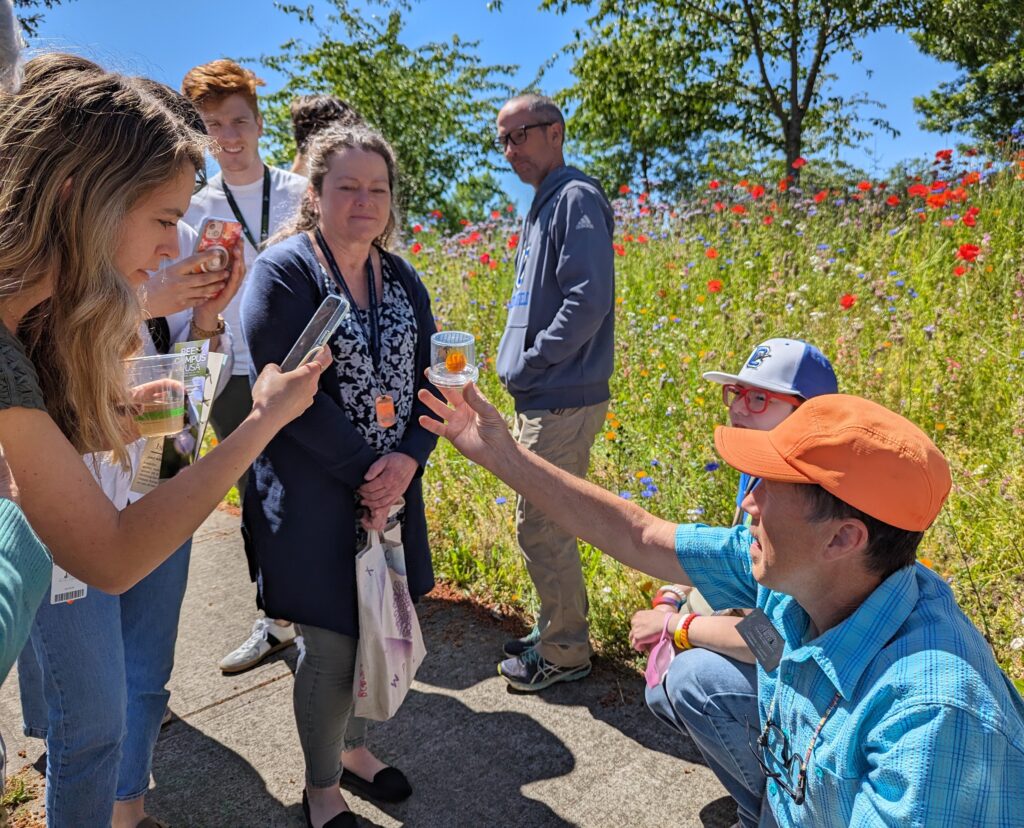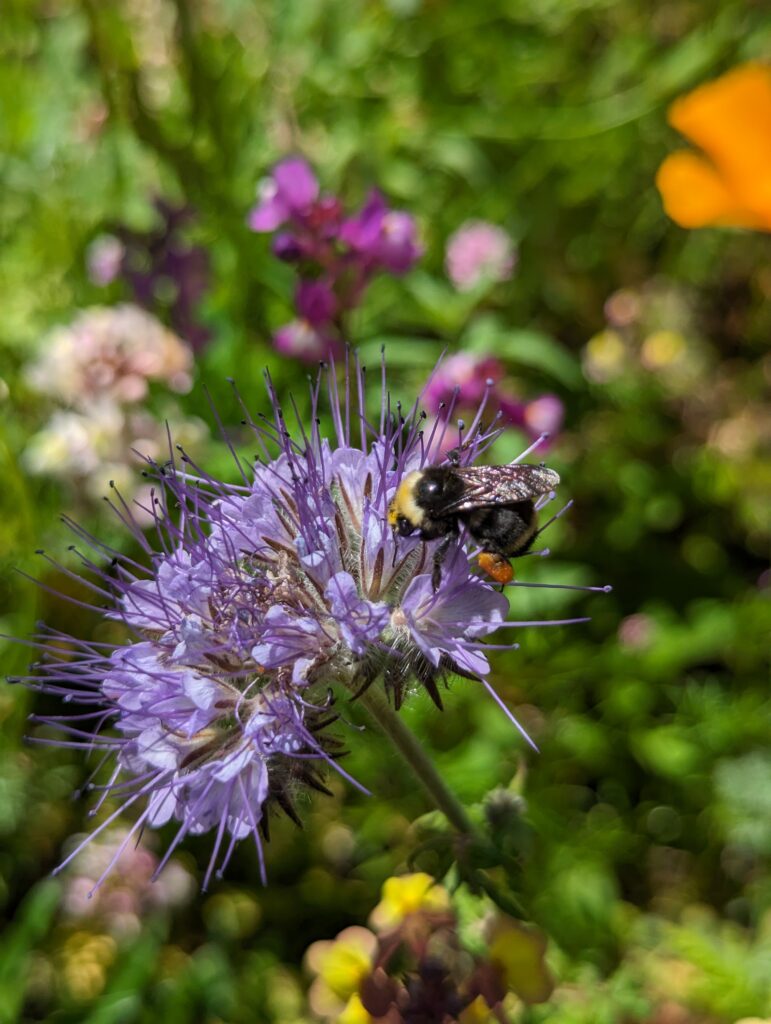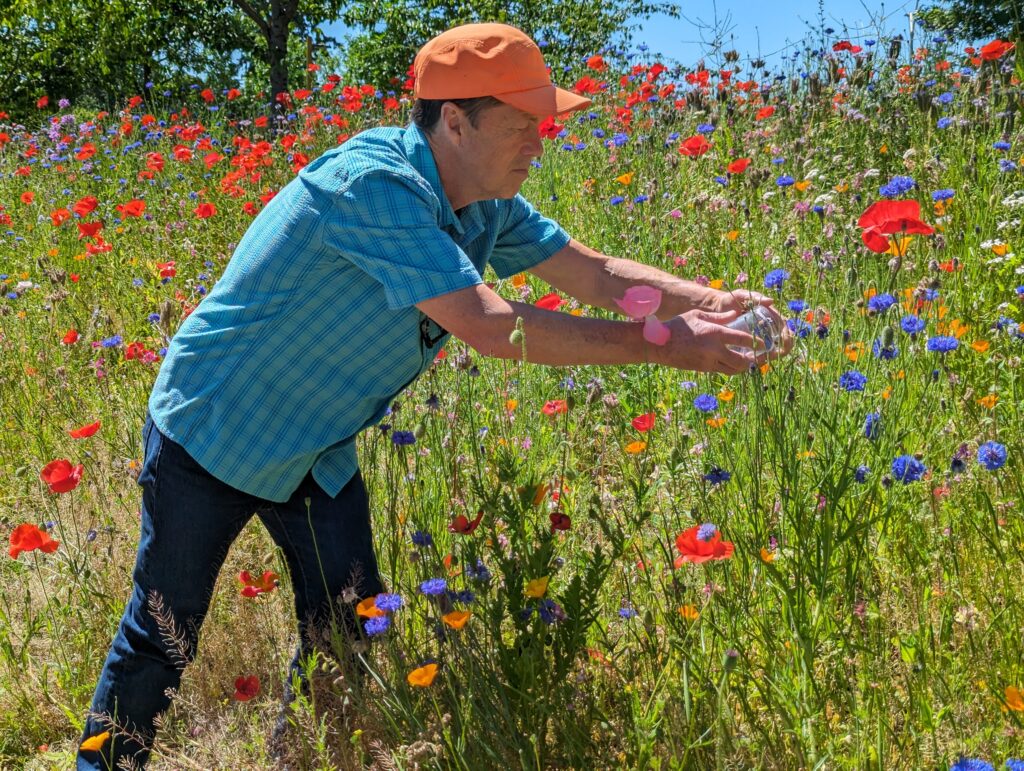TLC offers Bee Campus event with Professor Steven Clark

Thanks to Clark’s Teaching and Learning Center (TLC) for organizing a Bee Campus Talk and Tour with Steven Clark, biology professor and Bee Campus project manager on June 5.
The Teaching and Learning Center sent this invitation to faculty and staff: “We are buzzing with excitement to invite Biology professor and Bee Campus project manager Steven Clark back to spread the good news about Clark’s status as a Bee Campus. Want to learn more about what that means and how to get involved? Want to know how Clark students have participated in this very cool work? Want to learn fun things about bees and go for a stroll in a beautiful garden? Me, too! We will see you there.”
First, faculty and staff gathered in PUB 161 to learn so many interesting bee facts from Steven Clark. When Professor Clark asked people how many types of native bees live in North America, the lowest guess was 3. The highest was 300. What’s your answer?
Q: How many types of native bees live in North America?
A) 3
B) 80
C) 300
D) More
Professor Clark shared the answer: More than 600!
After sharing bee facts, bee habitat, bee life cycles, and much more about bees, Professor Clark led the group across Fort Vancouver Way to the bee garden outside the T Building. Clark’s campus has several bee gardens, thanks to Professor Clark’s leadership.


He caught a few types of bees and other pollinators in jars so that participants could get an up-to-close look. It was an amazing opportunity to learn more about bees and see our gardens of lovely wildflowers.
Clark students have contributed to our Bee Campus by performing bee surveys, building mason bee houses, creating information signs, and more. There are now interpretive signs at the bee gardens explaining and sharing of fun facts about bees.
If you haven’t seen the campus bee gardens yet, make time to do so. It’s best to visit on a warm day when it’s not raining. Professor Clark explained that when it’s cold and rainy, bees go dormant awaiting warmer temperatures.
Learn more
Bee Campus:
- Bee Campus (clark.edu)
- Bee Campus | Clark 24/7
- Clark College newly certified by Bee Campus USA | Clark 24/7
Professional development opportunities: employee training and development calendar.












